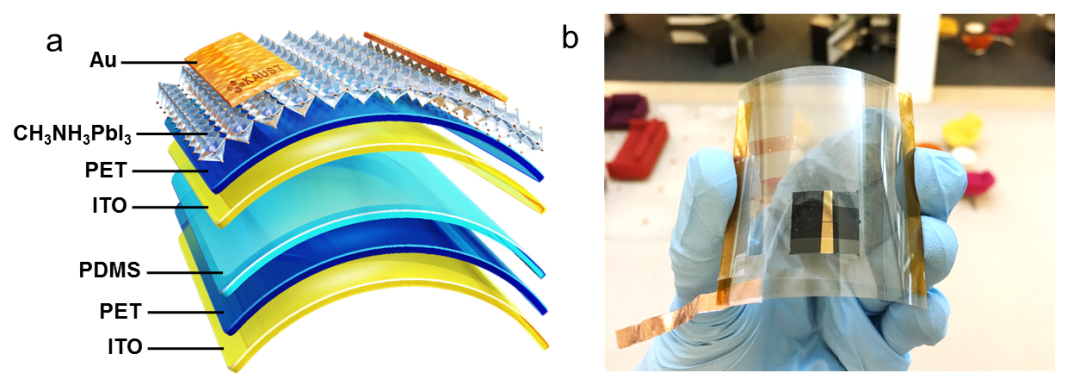Wearable electronic devices are the future of fashion and technology. The next-generation of such devices should be highly responsive, and need to be self-powered. These devices require better integrated components and are currently the focus of ongoing research. There is a great need for this type of research, as these components would find application in other future, autonomous technologies.
One such component required for image sensing and optical communication applications is a flexible, portable, and self-powered photodetector. Moreover, photodetectors that can respond to weak optical signals are important, especially for ambient light monitoring in smart buildings.
Previously self-powered photodetectors combining a triboelectric nanogenerator and an organometallic halide perovskite have been reported. However, the use of a motion actuator for accurate signal detection results in a bulky system.
Other materials such as silicon, zinc oxide, quantum dot and organic polymers have been extensively used for the production of photodetectors with varying success. Across all these materials, different responsivity, detectivity and response time are reported, because of their varying properties, such as bandgaps, spectral responses and carrier mobility/diffusion lengths.
A highly portable and integrated photodetector fabricated using a bendable, transparent triboelectric nanogenerator with an organometallic halide perovskite is presented by Jr-Hau He from KAUST and co-workers, in their paper published in Advanced Materials.

Schematic diagram (a) and photograph (b) of the self-powered perovskite photodetector. More information here.
An author of the Advanced Materials paper, Dr. Siu-Fung Leung states, “The next-generation of portable electronics should be wearable, versatile, and energy-efficient. Sensor systems combined with a triboelectric nanogenerator are an excellent option.”
The researchers separated the photodetection and triboelectric nanogenerator components from each other, and integrated them onto a flexible, transparent PET substrate. This design maximizes the photodetection by the perovskite, and the voltage output of the nanogenerator, while a simple voltage regulator circuit replaces the bulky motion actuator reported in other research. The system ensures accurate photodetection in a flexible, light-weight device.
As the world moves toward autonomous devices to improve quality of life for the global population, researchers are creating technologies that will lead the way to the future. In addition to their use in portable, wearable electronic devices and portable health monitoring systems, this technology could be used in smart buildings.

















